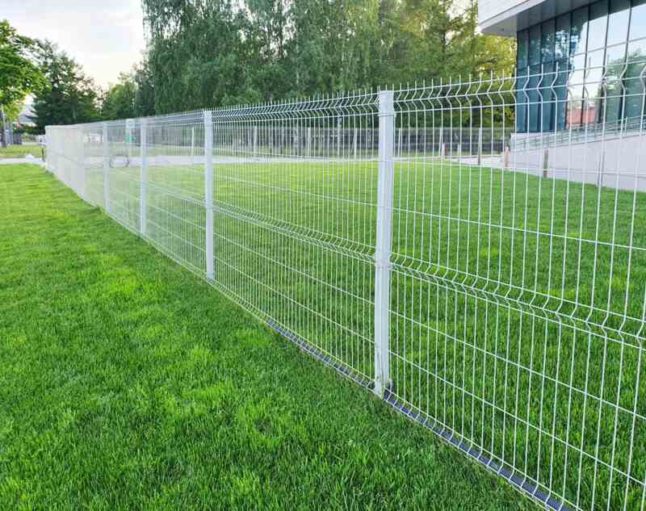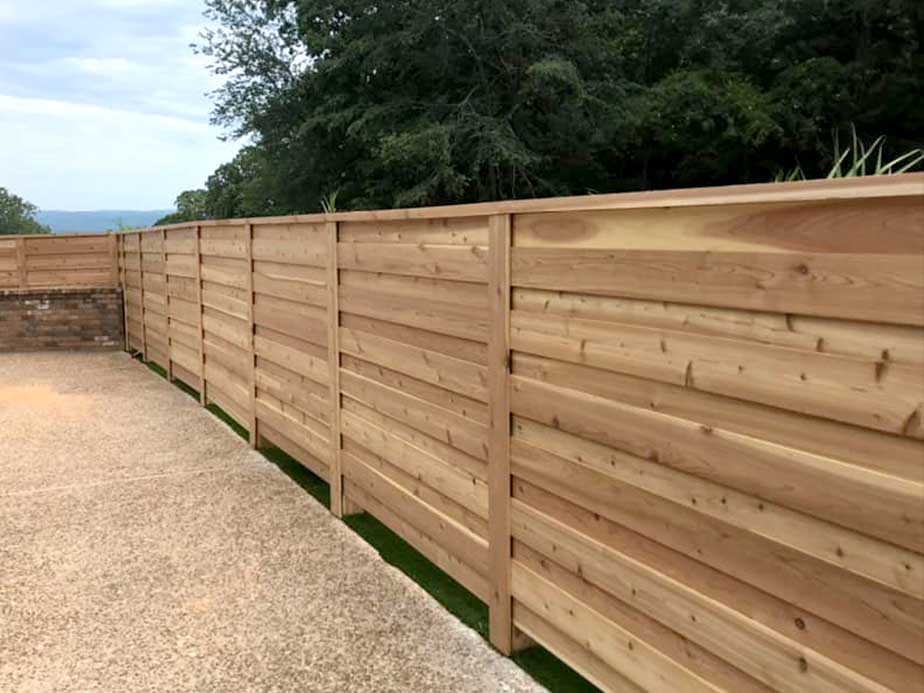All Categories
Featured
Setting up a fence on your home can include privacy, protection, and visual charm, yet before you begin excavating holes and establishing messages, it's crucial to understand whether you need a license. The type of fence you plan to set up, where it will be positioned, and regional zoning legislations can all affect the permitting process. Not obtaining the needed licenses can result in penalties or the demand to eliminate the fence. Right here's what you require to recognize to guarantee a smooth setup process.
Why Are Permits Required for Fence Installation? Licenses are essential for making sure that your fence adheres to neighborhood zoning laws and structure codes. These laws aid make certain the safety and security of your building and the bordering location. Furthermore, allows stop disagreements with next-door neighbors or neighborhood authorities, particularly when it pertains to residential property lines, elevation restrictions, and total style.
Oftentimes, regional authorities call for authorizations to regulate things like exposure at intersections or the distance of a fence to public spaces like walkways or roads. Licenses also help guarantee that fences are installed correctly and safely, specifically when it concerns one-of-a-kind materials or high fences.
Usual Types of Permits for Fence Installation. The kind of fence you intend to mount and your area will certainly determine which permits are called for. Here are one of the most typical kinds:
Building Permit. A building license is usually required for fencings that surpass certain elevation limitations (typically above 6 feet), are located near a public road or walkway, or are made from details materials. Building allows guarantee that the structure meets local building codes, including safety criteria.
Zoning License. Zoning authorizations are commonly needed to make certain that your fence abides by neighborhood zoning legislations. Zoning legislations can specify where a fence can be put on your residential property (e.g., along residential or commercial property lines or in front yards), in addition to set limits on fencing height. These laws are developed to avoid blockages that might influence traffic security or neighborhood aesthetic appeals.
![]()
Problem Permit. In some areas, you may require a problem authorization to place your fence a details distance from building utilities, roadways, or lines. Obstacles are meant to preserve proper room in between frameworks and property boundaries, decreasing possible disputes with neighbors or public framework.
Homeowners Association (HOA) Approval. If your residential property becomes part of a neighborhood regulated by a Homeowners Organization (HOA), you will likely require approval from the HOA before mounting a fence. HOA guidelines typically control the design, height, products, and also shade of fencings, ensuring that they match the overall visual of the area.
The Process for Obtaining a Fence Permit. To acquire a fencing permit, you normally need to contact your regional city or area workplace. The majority of locations have a structure division or preparation workplace where you can obtain licenses. The process involves completing an application and giving thorough info regarding your recommended fencing, including:
Fencing layout (products, elevation, style) Place on the home. Property line details (for exact placement) In a lot of cases, a website strategy showing the proposed fencing's position will certainly be called for. You may also require to pay a license charge, which can vary based on area and the intricacy of the job.
Once you submit your application, the neighborhood authorities will certainly assess it to make certain the fence adheres to local policies. Depending on your place, you may also need to permit or set up an evaluation for a property survey.
When Do You Not Required an Authorization? In some instances, a permit may not be called for. Typically, you could not require an authorization if:
![]()
The fencing is under a specific elevation (commonly 3-4 feet for front lawns) You're replacing an existing fence with the very same type and height. The fence is short-term (such as a garden fencing) It's constantly a great concept to examine with your regional building or zoning division to confirm the demands, as rules can differ.
Consequences of Not Obtaining an Authorization. In some situations, you may need to re-install the fence according to code, which can be pricey and lengthy. Additionally, not adhering to the correct permitting process can produce problems with next-door neighbors, especially if your fence prolongs past your building line or doesn't meet elevation or style requirements.
Verdict. Before setting up a fencing, make certain you're conscious of the regional policies and whether you require an authorization. By getting the correct permits, you'll ensure that your fencing is lawfully compliant, risk-free, and free from future issues.
Why Are Permits Required for Fence Installation? Licenses are essential for making sure that your fence adheres to neighborhood zoning laws and structure codes. These laws aid make certain the safety and security of your building and the bordering location. Furthermore, allows stop disagreements with next-door neighbors or neighborhood authorities, particularly when it pertains to residential property lines, elevation restrictions, and total style.
Oftentimes, regional authorities call for authorizations to regulate things like exposure at intersections or the distance of a fence to public spaces like walkways or roads. Licenses also help guarantee that fences are installed correctly and safely, specifically when it concerns one-of-a-kind materials or high fences.
Usual Types of Permits for Fence Installation. The kind of fence you intend to mount and your area will certainly determine which permits are called for. Here are one of the most typical kinds:
Building Permit. A building license is usually required for fencings that surpass certain elevation limitations (typically above 6 feet), are located near a public road or walkway, or are made from details materials. Building allows guarantee that the structure meets local building codes, including safety criteria.
Zoning License. Zoning authorizations are commonly needed to make certain that your fence abides by neighborhood zoning legislations. Zoning legislations can specify where a fence can be put on your residential property (e.g., along residential or commercial property lines or in front yards), in addition to set limits on fencing height. These laws are developed to avoid blockages that might influence traffic security or neighborhood aesthetic appeals.

Problem Permit. In some areas, you may require a problem authorization to place your fence a details distance from building utilities, roadways, or lines. Obstacles are meant to preserve proper room in between frameworks and property boundaries, decreasing possible disputes with neighbors or public framework.
Homeowners Association (HOA) Approval. If your residential property becomes part of a neighborhood regulated by a Homeowners Organization (HOA), you will likely require approval from the HOA before mounting a fence. HOA guidelines typically control the design, height, products, and also shade of fencings, ensuring that they match the overall visual of the area.
The Process for Obtaining a Fence Permit. To acquire a fencing permit, you normally need to contact your regional city or area workplace. The majority of locations have a structure division or preparation workplace where you can obtain licenses. The process involves completing an application and giving thorough info regarding your recommended fencing, including:
Fencing layout (products, elevation, style) Place on the home. Property line details (for exact placement) In a lot of cases, a website strategy showing the proposed fencing's position will certainly be called for. You may also require to pay a license charge, which can vary based on area and the intricacy of the job.
Once you submit your application, the neighborhood authorities will certainly assess it to make certain the fence adheres to local policies. Depending on your place, you may also need to permit or set up an evaluation for a property survey.
When Do You Not Required an Authorization? In some instances, a permit may not be called for. Typically, you could not require an authorization if:

The fencing is under a specific elevation (commonly 3-4 feet for front lawns) You're replacing an existing fence with the very same type and height. The fence is short-term (such as a garden fencing) It's constantly a great concept to examine with your regional building or zoning division to confirm the demands, as rules can differ.
Consequences of Not Obtaining an Authorization. In some situations, you may need to re-install the fence according to code, which can be pricey and lengthy. Additionally, not adhering to the correct permitting process can produce problems with next-door neighbors, especially if your fence prolongs past your building line or doesn't meet elevation or style requirements.
Verdict. Before setting up a fencing, make certain you're conscious of the regional policies and whether you require an authorization. By getting the correct permits, you'll ensure that your fencing is lawfully compliant, risk-free, and free from future issues.
Latest Posts
Elevate Your Event with Yesterday's Pub Event catering
Published May 14, 25
1 min read
Experience Year-Round Charm at Deauville Inn: From Warm-Weather Fêtes to Winter Brunches
Published May 14, 25
2 min read
Seamless Light Weight Aluminum Gutters: The Smart Choice for Your Home
Published May 12, 25
1 min read
More
Latest Posts
Elevate Your Event with Yesterday's Pub Event catering
Published May 14, 25
1 min read
Experience Year-Round Charm at Deauville Inn: From Warm-Weather Fêtes to Winter Brunches
Published May 14, 25
2 min read
Seamless Light Weight Aluminum Gutters: The Smart Choice for Your Home
Published May 12, 25
1 min read